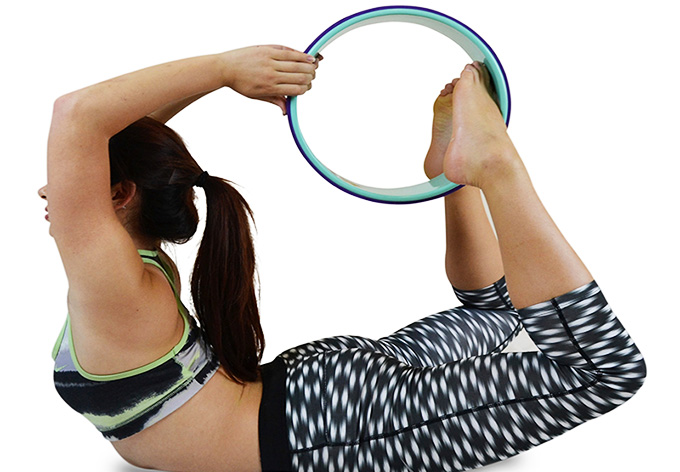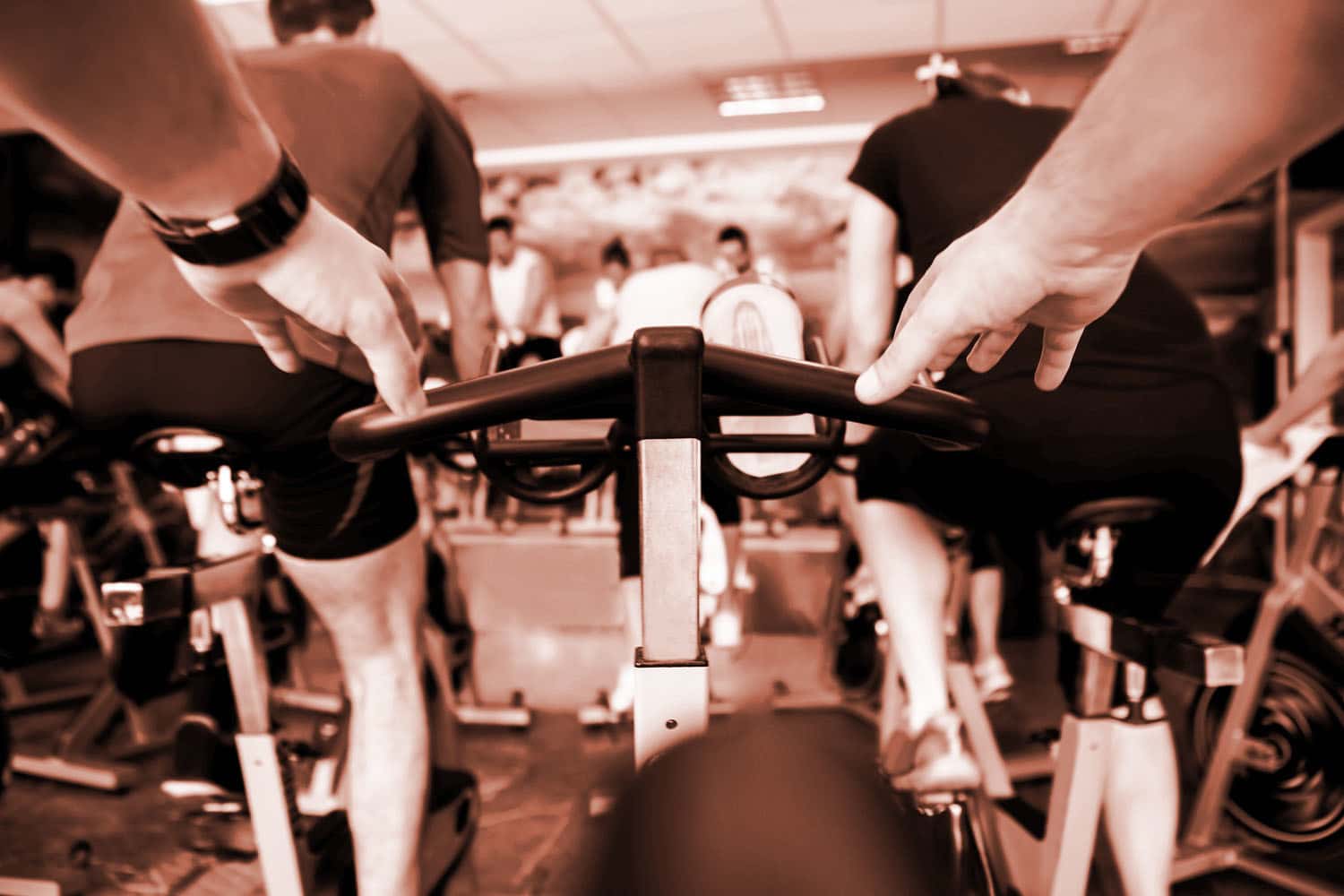Biking is awesome and it has a lot of benefits for the body. But truth be told, nobody really loves biking in the rain, or when it’s minus five outside, or under the scalding sun. But what about biking in a room with a great coach who motivates you, all the while, listening to great music? We like that a lot more.
People started the activity of biking indoors in the 90s. And it has continued on and still growing in popularity. A lot of gyms nowadays give classes. Hundreds upon hundreds of biking studios have opened globally. Some people call it spinning, but that’s trademarked. Some people call in indoor cycling.
Whatever name people call it, we can be certain that it’s very effective for cardiovascular fitness and strength training. A forty-five minute class can cause your body to use six hundred calories. It can be good for your respiratory system, and muscles of your legs and core. Research has also revealed that biking indoors can drastically reduce the fat levels in your body and can be very healthy for your heart.
Biking indoors requires a lot of intensity and speed, but it’s awesome for people in all levels of fitness. Biking is also low-impact, not like jogging. Ryan Makely, a trainer at Flywheel believes that since you choose who intense you bike, injuring muscles is almost impossible.
But we also figure that as a newcomer, biking class can be very scary. You have to think of so many things at once. You need to fix your seat. You need to clip your feet on the pedals. You need to go along with the music. It can be very very tricky. Because of this, we compiled some tips to help you get past those first few classes.
- Choose a seat.
Many places for biking indoors permit bikers to grab a bike over the internet before their actual class. That’s a good idea, since you can look for one that suits you the best. Marion Roarnan of Peloton Cycle mentions that newcomers would be better suited up front because he or she could see the coach better. Newcomers could also find sitting in front motivating.
A lot of places with indoor biking had what is called tiered seating which allows bikers at the back to see the entire room. Whatever it is, picking out your biking position is a good way to start.
2. Wear the right clothes.
Wear clothes that can either stave off moisture or keep your body from overheating. Tights are better than shorts or baggy jogging pants. Bicycle shorts with padding can also make the experience more comfy for you.
As far as shoes go, most indoor bikes have pedals that require bike shoes. These places normally have these shoes rented if you don’t have any rubber shoes. But if the gym you’re planning to go to doesn’t have these special shoes, you can use any time of good rubber shoes.
3. Customize Your Ride
Try adjusting your bicycle a bit. You may discover it could change the whole experience. One way to know if your seat is just right is if you pedal down, when your foot reaches the lowest point, your leg is at a twenty-five to thirty degree angle. And it’s also important to note that when you’re pedaling, your knees should be directly above your toes.
Now, to determine if your seat and the handlebars are correctly spaced, lay your elbow at the end of the seat. Move the seat towards or away from the handlebars. The important thing is that the tips of your fingers are touching the back of the handlebars.
Change how the level of the handlebar so it feels just right for you. If the handlebar is too low, it could have a bad effect on your lower back. If you have problems with your neck and shoulders as well, increase the height of the handlebar and move the seat closer to it.
4. Know the mechanics of clipping your foot in and out of the pedal.
Even with the rigorous training, when you clip in and out of the bicycle can be the most difficult time you have in gym. If have normal rubber shoes on, don’t push the front part of your foot straight to the end of the pedal. You should first put the ball of your foot inside the cage in the middle of the pedal.
If you have biking footwear on, clipping in a foot at a time is best. Face your toes down on the top of the pedal. Slide it downward. Make sure your shoe is locked with the pedal.
Once you’re clipped in, keep yourself on your seat. Do the pedaling motion slowly. When one foot is at the lowest point, point your foot away from the bicycle until you feel it unlock from the pedal. If this doesn’t happen, just remove your feet from the shoes. You’ll eventually get used to it.
5. Familiarize yourself with the terms.
Bicycles used for indoor biking are different from those used outdoors. For example, indoor bikes don’t have mechanisms to change gears. There is a switch however for controlling how hard the pedals resist your strokes. Adjusting these can control how much effort your muscles have to put in to bike or to reach a certain speed. If you were biking outdoors, the higher your resistance setting, the steeper the hill your biking.
When you start, the coach will provide you the number you need to set. This number will determine the effort you’ll need to put in. For places such as Flywheel, the bikes can show you what level of effort you’’re putting in.
Although people should make the proper adjustments so that they are more comfortable biking, it is recommended that they stay within two points of what the coach recommends. If your legs can’t put in the effort or if you feel you’re going to pass out from all the effort you’re putting in, you should make the adjustment right away.
6. Put emphasis on the upward motion of your legs.
Many newcomers put a lot of emphasis on the downward motion of the legs, but Roaman believes the pulling the legs up is where all the power comes from. If a biker puts emphasis on the upward motion, when he or she pulls up, that increases momentum as well as revolutions per minute (RPMs). That’s the good thing with special biking shoes. If you clip yourself in, you can put emphasis more on the movement of your legs rather than if your feet are at the correct position.
And always remember your abdominal muscles. As you are seating or slightly above your seat, try using your core to support the low portion of your back. Always make sure your back is straight.
7. You should focus on you.
It’s understandable if your confidence will be a bit low at the beginning, given the fact that other people in the room have been doing it for quite some time. But remember that when the class has started, your main focus is yourself. And nobody else is minding you. Everyone else is minding their own training.
It’s one of the best things about biking indoors. You won’t be disturbed. Indoor biking sessions match the tempo of the music to the intensity of the workout. If it gets too difficult, try closing your eyes. Try pedaling. Try losing yourself in the beats and the melodies. Find a session and a coach who puts on tunes that you love. It’ll make everything better.
Other helpful hints:
· A lot of the places for indoor biking offer towels. If they don’t, it’s highly recommended that you bring one. Just drape the towel on the handlebars. You’ll be using it not long after the class begins.
· Arrive on time. Arriving five minutes late could probably lose you the session. You need ample time to do all the pre-workout rituals such as putting your things in your locker and adjusting your bicycle.
· Consume a small meal about an hour and a half prior to a session. You’ll need the energy.
· Bring water. You’re going to need to rehydrate. It has been said that for a forty-minute session, you’ll need forty ounces of water.
· A couple of sessions nowadays also have light weights for lifting while biking. Make sure though that your bike is well-adjusted so you can stabilize yourself as you find yourself both lifting and pedaling.








